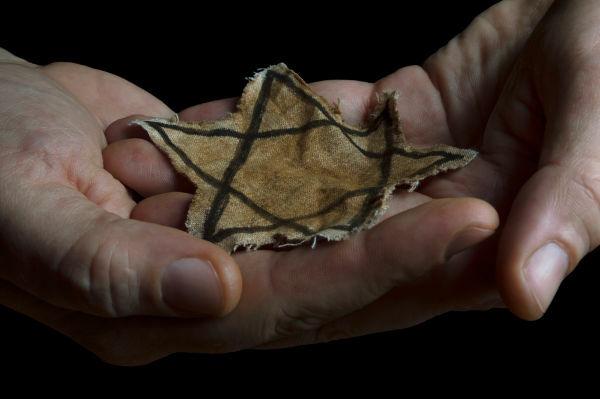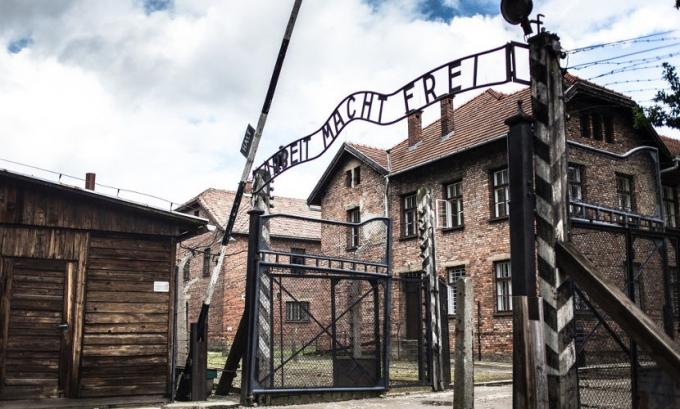O Holocaust was the name given to the genocide carried out by the Nazis during World War II. The main group that suffered from systematic killing were the Jews, but the Nazis also ordered the execution of black, gypsies, homosexuals andJehovah's Witnesses, and it is estimated that the result of this was, at least, six million dead.
Jews refer to the Holocaust as shoah (which means “catastrophe” in the Hebrew language), they were the ones who were most persecuted during the genocide. The victims of the Holocaust died in a variety of ways, such as: poisoning in gas chambers and mass shootings.
see more: Causes of World War II - Interwar period, rise of Nazism and other conflicts
Anti-Semitism
Jews are considered the group most affected by Nazi actions during the Holocaust, as they were the absolute majority of those killed in that genocide. The persecution of them in this context is related to anti-Semitism, which gained strength in Europe in the second half of the nineteenth century. The German society of that period already showed strong signs of this feeling.
Anti-Semitism is the word we use to explain the aversion/hate that a person feels for the Jews. It was this prejudice that moved an entire country to persecute them. At the end of the First World War, anti-Semitism in Germany took on the contours of a conspiracy. Influential people of that society explained the German defeat in this conflict as the result of a Jewish conspiracy. This explanation became known as “Backstab theory”.
Anti-Semitism was the sentiment that grouped people around German far-right groups in the 1920s. it is believed that hitler, leader of Nazism, became an anti-Semite in the 1910s, when he resided in Vienna, the capital of Austria.
Anti-Semitism was a crucial element of the Nazi ideology, and the hate speech propagated throughout the 1920s became practical action when the Nazis came to power in Germany in 1933. That's how genocides are born: hate speech, at some point, gives way to physical persecution.
Also access:Operation Valkyrie - the latest attempt to kill Adolf Hitler
Nazi germany
The persecution of Jews in Nazi Germany was constant and aimed at exclusionSocial their in the long term. The mobilization of society against these people was also very important for Nazism, as it ensured that their ideas and actions were supported and implemented.
From 1933 onwards, a series of laws and actions turned against the Jews. The first law, in this sense, of April 1933, was known as Law for the Restoration of Professional Public Service, which decreed the exclusion of Jews from public service. Two others limited Jewish access to university and prevented them from exercising certain professions.

From 1935 onwards, Jews were no longer considered German citizens by the Reich Citizenship Law, becoming only “subjects of the State”, that is, people who did not have the basic rights of a citizen, but who, nevertheless, had to fulfill their obligations towards the German State.
The imprisonment of Jews in concentration camps started in 1938, when a pogrom (coordinated violent attack) against them throughout German territory.This attack was ordered by the top of Nazism as a way to avenge the murder of a German diplomat by a Jew in Paris.
The result was hundreds of shops and synagogues destroyed across Germany, thousands possibly killed, and 30,000 Jews imprisoned and sent to three concentration camps. This event was called NightFromcrystals, alluding to the amount of broken shop windows.
Second World War
This conflict began in 1939 and was the right moment for the Nazis to turn their rhetoric, which advocated the elimination of the Jews, into practice. As the war got out of Germany's control, members of the Nazi government suggested actions to deal with the “Jewish question”.
Some defended the deportation of the Jews, and suggestions such as Soviet Union and Madagascar, were considered, but logistical and diplomatic issues caused this idea to be abandoned. The proposal that gained momentum was the Jewish elimination program known as SolutionFinal.
Final Solution
This term was a euphemism used by the Nazis to refer to the murder of the Jews in industrial scale. At that time, those developed apparatus for executing individuals of gigantic dimensions. The elimination of the Jews, in this plan, took place mainly on two fronts:
Extermination groups;
Extermination camps.
The Nazis decided to cluster them in places like fieldsinconcentration and ghettos. In these camps, Jews were placed in forced labor regime, and their living conditions were bad. As the war progressed, the Nazis developed the extermination camps, exclusively focused on execution.
The first form of execution of the Jews took place by the death squads, known in German as Einsatzgruppen. These groups acted behind German lines in Eastern Europe and carried out a veritable “ethnic cleansing”. Divided into four large squadrons, they hunted, herded and executed the Jews in enormous numbers.
The performance of these groups, however, presented some problems from the Nazi point of view, as the velocity with which they eliminated the Jews was not what was desired (the Nazis wantedthe volume of deaths increased). Also, many members of the death squads developed psychological problems for being involved in the executions of so many people.
read more: Universal Declaration of Human Rights - Holocaust motivated document
concentration camps
With that, the Nazis decided to make use of gas chambers to increase the volume of deaths. Initially, they used these cameras to deal with the people who were part of the PrograminEuthanasia, which executed people with physical and intellectual disabilities.
In this program, people were placed in gas chambers and in them died from asphyxia via monoxideincarbon. These devices were taken to the extermination camps, built for the purpose of killing more Jews. As of the second half of 1941, the following extermination camps were built: Auschwitz-Birkenau, Chelmno, Majdanek, Sobibor, Treblinka and Belzec.

They were all in Poland, and some made use of the Zyklon-B, a pesticide that released a highly poisonous gas. It is believed that, in the extermination camps alone, about three million people have died. The action of the extermination groups, in addition to the mistreatment that Jews suffered daily in the concentration camps, led to the death of millions more.
The advance of Allied troops at the end of World War II caused many concentration and extermination camps to be liberated by the Americans and Soviets. The most symbolic case took place on January 27, 1945, when the Soviet army released Auschwitz. If you want to deepen your knowledge on this topic, read our text: Second World War.
Image credits
[1] bondvit and Shutterstock



